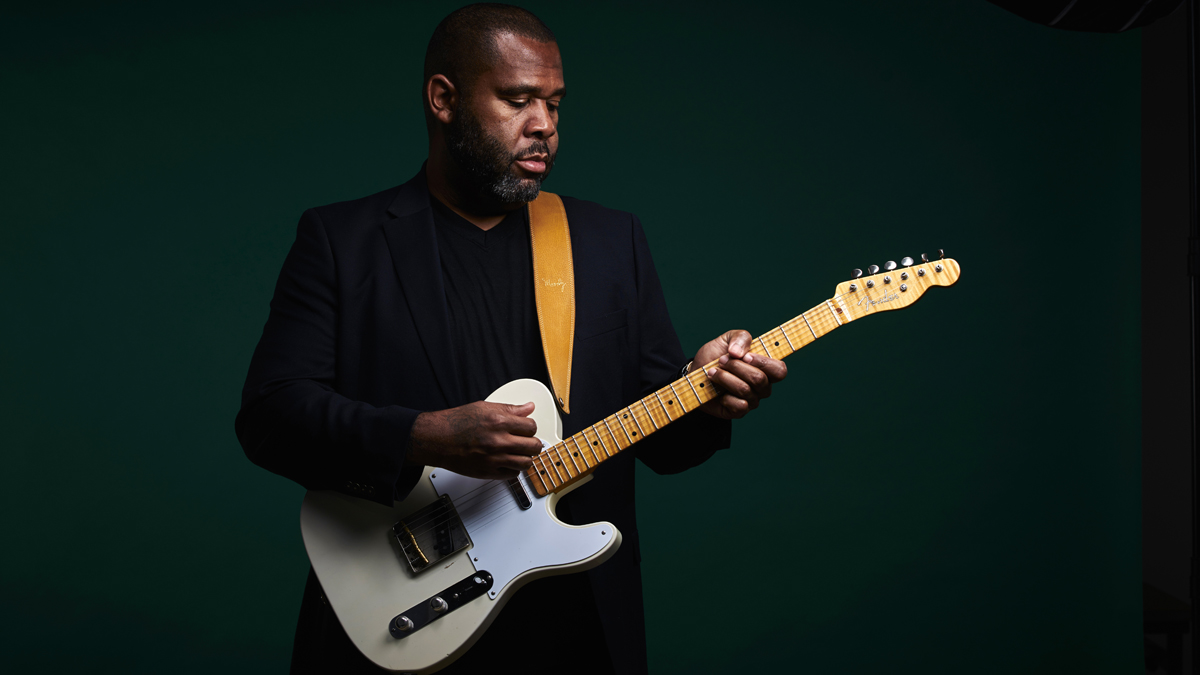
In this lesson, we’re looking at the playing of leading modern blues guitarist Kirk Fletcher. Kirk spent a lot of time in his younger years with the great Robben Ford. Unsurprising, then, that his style, particularly his rhythm playing, is informed by Robben’s deep sense of harmony.
Fletcher was also the guitarist in the well-established blues band The Fabulous Thunderbirds, the seat once held not only by the great Jimmy Vaughan, but also Duke Robilliard and Doyle Bramhall II, too.
Fletcher is also great pals with Joe Bonamassa and is featured on the DVD Live From The Greek Theater, the exposure from which brought him to the attention of audiences worldwide.
Kirk’s style is modern and vibey, but with enough evidence of his lineage to keep him in the blues purists’ good books. His phrasing is classy and he always makes great use of space among the killer licks. It’s clear, too, that Kirk has studied the heritage of modern electric blues guitar, and you’ll often hear him referencing such greats as B.B. King in interviews.
He obviously has the Albert King and Stevie Ray Vaughan language down, too. But while many players spill out musical quotes from famous players willy-nilly, Kirk has created his own sound, a personal and unique blend of influences that combine with his own creative spirit.
Our track is a simple one-chord New Orleans groove on C7. Kirk has covered Louisiana native Sonny Landreth’s track Congo Square on record, so it’s quite appropriate. However, his easy-going style is deceptive, so he makes a lot of technically demanding lines sound easy. Therefore some of these moves need care and finesse if you are to pull them off properly.
Many of the ideas in our solo exploit both the major and minor 3rd, and this straddling of the line between the two is a staple of blues playing. Kirk often slides into notes for more expression and these, along with bends and legato, give his solos their vocal quality.
Speaking of string bending, for most of the bends in our example you’ll need to have more than one fretting-hand finger on the string, both to provide support to your fingers, but also to keep the bends in tune.
As far as rhythm goes, the use of triplets and sextuplets adds variety. Sextuplets are a useful subdivision of the beat where the tempo is too fast for 32nd notes but where 1/16ths might seem somewhat pedestrian.
Once you have these ideas under your fingers, try generating a few variations of your own. The more you do this, the more you too will start to sound like an original.
Get the tone
Amp Settings: Gain 4, Bass 5, Middle 4, Treble 6, Reverb 4
Kirk exploits several different types of setup, using guitars with humbuckers and single-coil instruments. However, one constant is that you’ll need an American-style amp sound. Reverb will be essential. You’ll also need some overdrive. For rhythm, a good rotary speaker emulation pedal (or model), or perhaps a classic tremolo pedal might come in handy.
Example 1. Blues scale lick with bends
Our first example uses the minor pentatonic, embellished with b5s. Be careful with the bends – prep by checking the sound of the fretted note before bending to it.
Example 2. Supporting the bending finger
On the first bend you’ll need to support the bending finger. If you bend with the third finger, also get the first and second digits behind the string to add power.
Example 3. Position changes using slides
This example slips and slides from the third position to the eighth, the slides helping to navigate the position changes.
Example 4. Breaking out of box shapes
This lick starts around the 10th fret area, again shifting positions to break out of the usual and predictable minor pentatonic box.
Example 5. Solo
The sample solo takes the above ideas but weaves in and out of them using other lines to create a flow. You’ll note that the solo has much more of a mix of major and minor 3rds. Be careful to get the bends in tune. Have fun!







